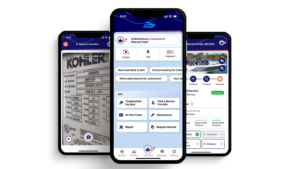New data paints familiar picture of workforce in marine industry

Data from a global study, supported by Marine Industry News, is painting a familiar picture of how the marine sector views itself and its employment opportunities. In a nutshell, most of those who work in the industry like or love it, but are underpaid, and / or not supported enough.
An impressive 71 per cent of respondents to the workforce survey, which took place in April this year, strongly agreed with the statement: “I enjoy working in the marine industry,” while 75 per cent indicated that: “I am very happy with my current job.” Plus, 42 per cent of respondents had been working in the sector for 20 years or more.
Among the data garnered from across the sector there are some handy reminders about successful strategies for attraction, retention and succession planning in the marine industry contained in the full report (which is available to download).
The study focused on attracting, retaining, and developing top talent with the data aiming to equip business leaders with insights and actionable strategies to drive sustainable growth, success, and future readiness in the marine industry. Employees from diverse roles and regions shared their perspectives on what draws them to the industry, what encourages them to stay or leave, and their career aspirations.
Respondents identified wages and wage growth as a significant weakness in the industry, creating challenges for both recruitment and retention. Many voiced frustrations over wage disparities between the marine industry and other sectors for similar roles and responsibilities. The largest group of respondents earn $50K-75K, and 55 per cent of respondents earn less than $100K per annum.
Supported by Marine Industry News in partnership with Soundings Trade Only Group and with sponsors MarineMax, Volvo Penta, IMTRA Corporation, Yamaha, NMMA, MRAA, global industry partners ICOMIA and research partners Category One and P20, the data came from 700 respondents, of whom 60 per cent were male and 40 per cent were female. Overall, 80 per cent of respondents were from the USA. In addition to the quantitative data, the study also included qualitative insights gathered from two USA-based focus groups conducted in July 2024.













